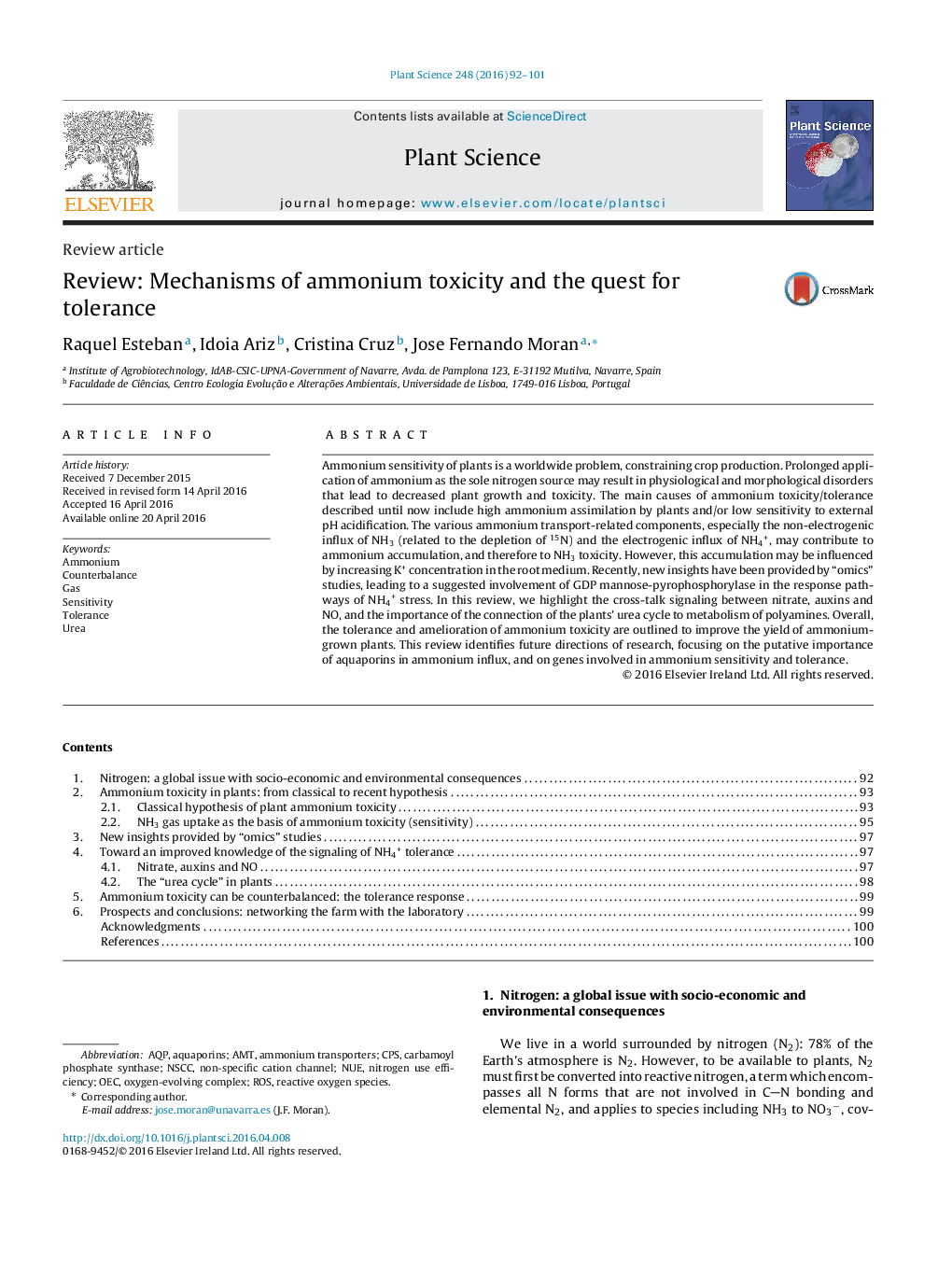| Article ID | Journal | Published Year | Pages | File Type |
|---|---|---|---|---|
| 2016925 | Plant Science | 2016 | 10 Pages |
•Key factors determining tolerance or sensitivity to ammonium are described.•Amelioration of ammonium toxicity is integrated in this review.•Studies how the ammonium is transported out of the cell are envisaged in future.•Regulation and signaling processes may contribute to ammonium tolerance across species.
Ammonium sensitivity of plants is a worldwide problem, constraining crop production. Prolonged application of ammonium as the sole nitrogen source may result in physiological and morphological disorders that lead to decreased plant growth and toxicity. The main causes of ammonium toxicity/tolerance described until now include high ammonium assimilation by plants and/or low sensitivity to external pH acidification. The various ammonium transport-related components, especially the non-electrogenic influx of NH3 (related to the depletion of 15N) and the electrogenic influx of NH4+, may contribute to ammonium accumulation, and therefore to NH3 toxicity. However, this accumulation may be influenced by increasing K+ concentration in the root medium. Recently, new insights have been provided by “omics” studies, leading to a suggested involvement of GDP mannose-pyrophosphorylase in the response pathways of NH4+ stress. In this review, we highlight the cross-talk signaling between nitrate, auxins and NO, and the importance of the connection of the plants’ urea cycle to metabolism of polyamines. Overall, the tolerance and amelioration of ammonium toxicity are outlined to improve the yield of ammonium-grown plants. This review identifies future directions of research, focusing on the putative importance of aquaporins in ammonium influx, and on genes involved in ammonium sensitivity and tolerance.
